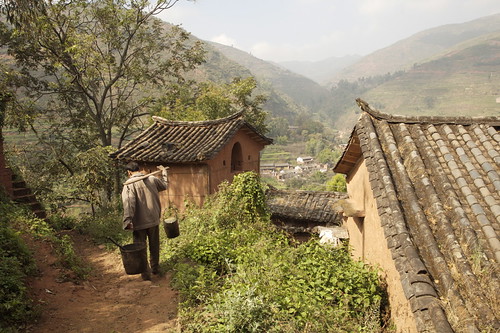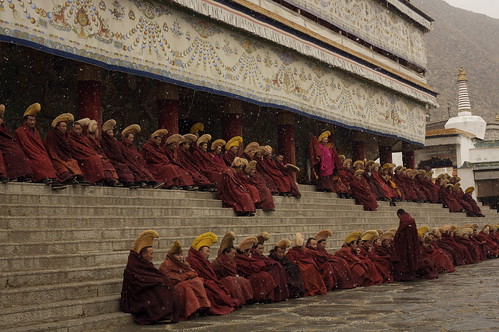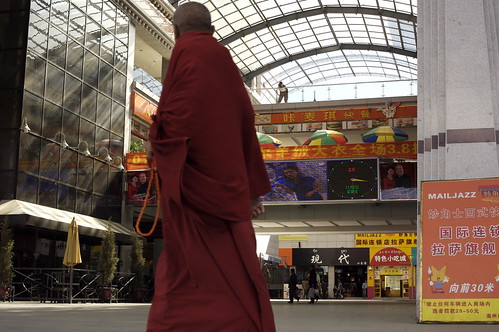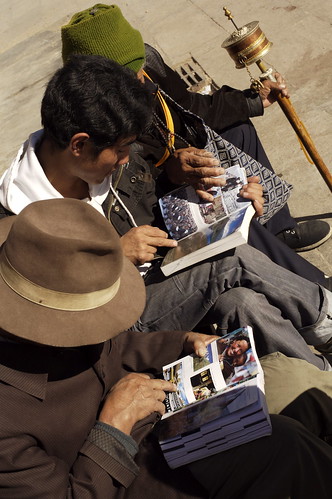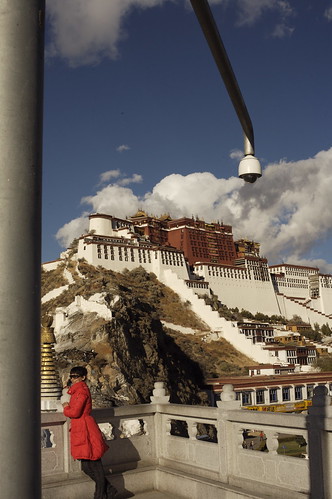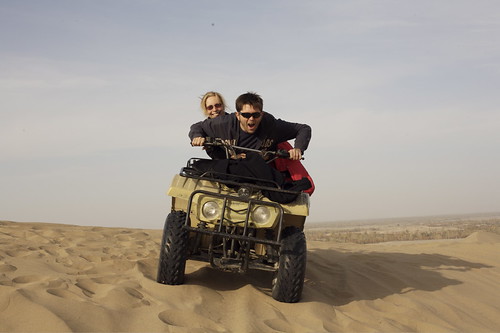
We got the 7am Jeep from Rumboor to Ayun, missing breakfast, where we got a bus to Chitral. Ramazan (
Ramadan), the holy month of fasting for Muslims, had started a few days ago. Muslims should fast between sunrise and sunset, nothing should pass their lips during this time not even water. We had been staying with a Kalash family, who being ‘kafir’ or ‘non belivers’ don’t follow Ramazan, so it had not been a problem getting food during the day. In Chitral it was a different matter. It’s rude to eat in front of people who are fasting especially in public. We managed to find a hotel where we could score some food, the curtains drawn, we tucked in. It felt like we were having a cigarette behind the bike sheds. After visiting the post office we got a shared jeep to
Mastuj. We met Caroline, an English girl from York, who was sitting next to us on the Jeep, she was living in Mastuj and teaching at the school. She was fasting saying, “It’s easier when staying with families”. It was a beautiful and bumpy four hour ride to Mastuj. We stayed at Tourist garden, where Caroline also stayed. It’s a lovely place with a beautiful garden with peach, pear and apple trees, surrounded by the reddish rock of the barren Hindu Kush mountains.
‘Iftah’ is the meal Muslims break their fast with after sunset each day. This is usually done with dates and some snacks such as Pakora, followed by dinner. In Mastuj, what sounded like an air raid siren marked the starting time. This is also published in the newspapers, on TV and radio. We joined the family for Iftah, then asked if there was anywhere to watch the cricket.
Fahed the youngest son (10), got very excited by this and suggested someone’s house. We trekked across town to a families house who had satellite TV. We had missed the
England V New Zealand game, which England lost by five runs, but managed to catch
Pakistan beat Australia by six wickets.
Fahed became our guide for Mastuj and took us on some great walks around the town and up to ‘Donkey Rock’ which had some amazing views, but looked nothing like a donkey. His mate joined us and we met another friend who was carrying a rifle, “Want to shoot some stuff?”.

We stayed there three nights, also catching the dismal England Vs India game, before catching the NATCO bus to
Phander. A stunning journey over the Shandur Pass (3810m), where a huge Polo festival takes place every July with games between rivals Chitral and Gilgit. The bus stopped at Shandur for a while and a Tea shop called us over. The bus conductor treated us to tea and biscuits even though they weren’t partaking due to Ramadan they insisted we should.

The road followed the Gilgit river, the colour of which changed from a shining turquoise to jade to silver to grey, impossible to capture on photograph. In
Phander we checked into ‘The Over the Lake Hotel’ and went for a walk around meeting most of the small village, including a very friendly teacher and his family who invited us in for tea and bread. They were not following Ramazan, “We are Ismaili, we cannot do Ramazan, we also need to work in the fields, we can’t work if we do Ramazan”.
The majority of the people in this region are from the Ismaili Shites branch of Islam, which was founded in Iran and arrived here via Afghanistan. Their current leader is Prince Karim Aga Khan who lives in Paris. The hills were full of welcome message’s to him, from his last visit here. The Ismaili women dressed in bright colours and were less concerned with fully covering themselves with veils.
We had meant to stay only one night but the 10am bus, the second bus of the day, whizzed past us, full. There was no other bus, we waited on the side of the road for a jeep which didn’t come so we stayed another night, a bit pissed off as we wanted to catch the Semi Finals of the
World Cup Twenty20 cricket.
We went to the large PTDC hotel which was closing up for winter, but a few staff were still there. We asked if we could watch the cricket, nobody could receive the channel which had the cricket on, but we managed to listen to the commentary, half English, half Urdu, and watch the score change on a small text box on a news channel. We had Iftah and dinner there following the
Pakistan V New Zealand game, which Pakistan won by six wickets.
India beat Australia by 15 runs setting up an exciting
India V Pakistan game for the final.
We got up at 4.30am the next day to make sure we caught the first bus, which came just after 5am. The road from here was a lot smoother, but for some reason Karen got travel sick here, maybe it was the greasy parantha we necked before jumping on the mini bus. We got to
Gilgit around 9.30am, checking into the Madina Hotel. Dave, the Australian guy we traveled through Iran with, recommended it to us “Say hello to Mr Yacoob, he saved my skin, getting me on the plane after I had kidney stone problems”. It was a nice place, the rooms set around a pretty garden, and they had well needed hot showers! Mr Yacoob is a very nice guy and a bit of legend.

We had a sleep, shower, shave, then headed to the plush Gilgit Serene Hotel. Situated above the town and giving stunning views across the valley to Dumani and Rakaposhi peaks. We had a walk around, then stayed for Iftah and Dinner served outside in the gardens with an amazing view and sunset.
The next day we took a walk through Raja Bazaar down Punial Road to Kargah Nala, catching a taxi the last part of the 5km journey. Buddhism flourished in this region, traveling through here to Tibet, China and other parts of Asia. Carved into a rock face at Kargah Nala is the image of Buddha, which may date from the 7th Century. A lad showed us a tricky path to get a closer look then invited us to play Ludo with him and his friends. Kaz won. We walked back to Gilgit via the village of Barmas following a water stream. A beautiful peaceful walk, we were joined only by a shepherd and his goats.
We got back to Madina just in time to watch the Final of the Cricket,
Pakistan V India. It was a great game, especially towards the end where it got very close and tense. It looked like the game was over when Pakistan’s Afridi, “favourite shot, anywhere for six”, got caught out on his first hit, but then Misbah had a great run hitting a few sixes, taking Pakistan very close to victory. India won by 5 runs after Mishbah got caught out by a hit which was heading for six and would have meant victory for Pakistan.

